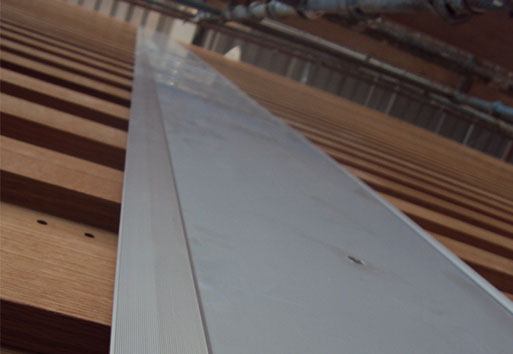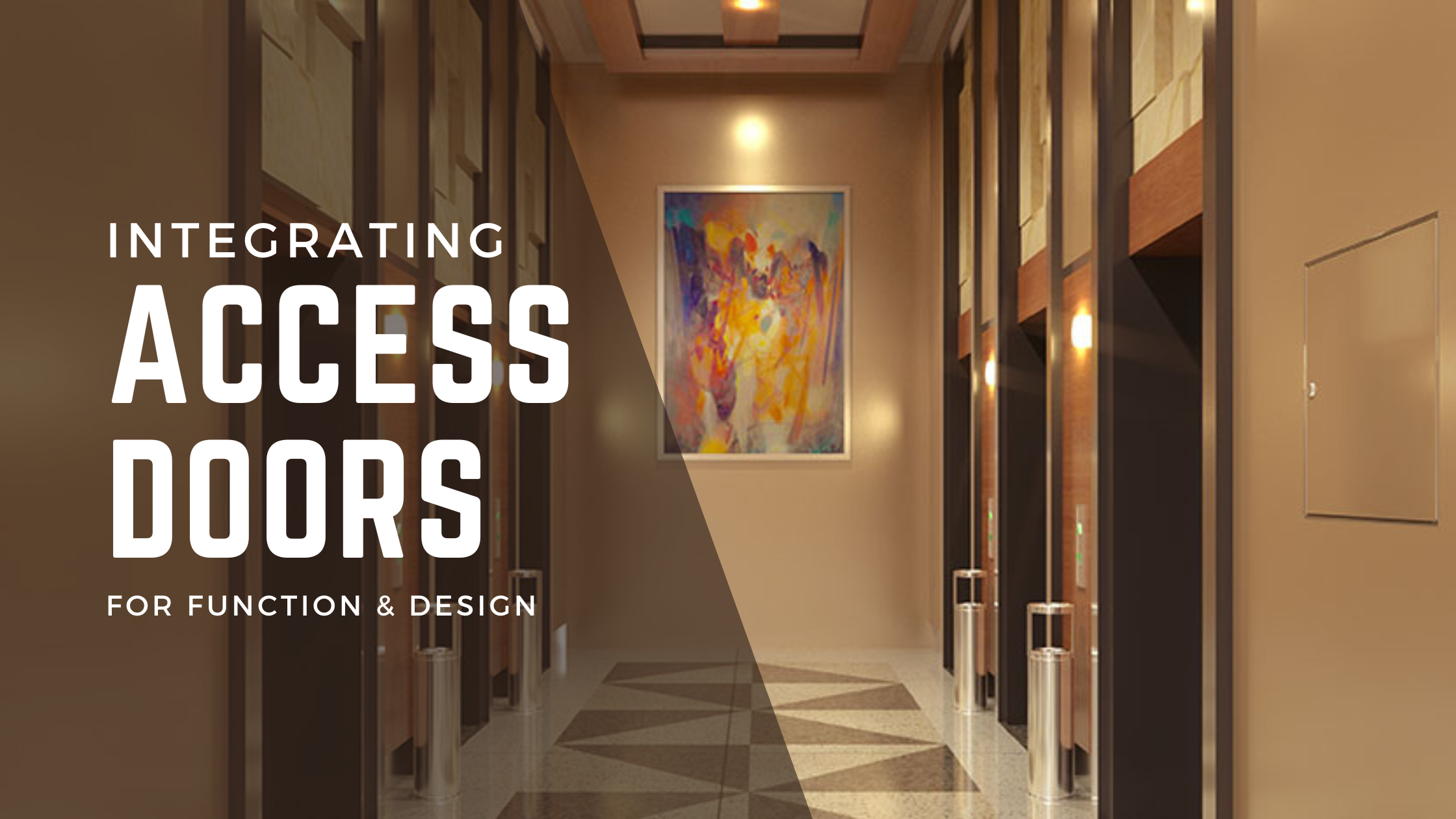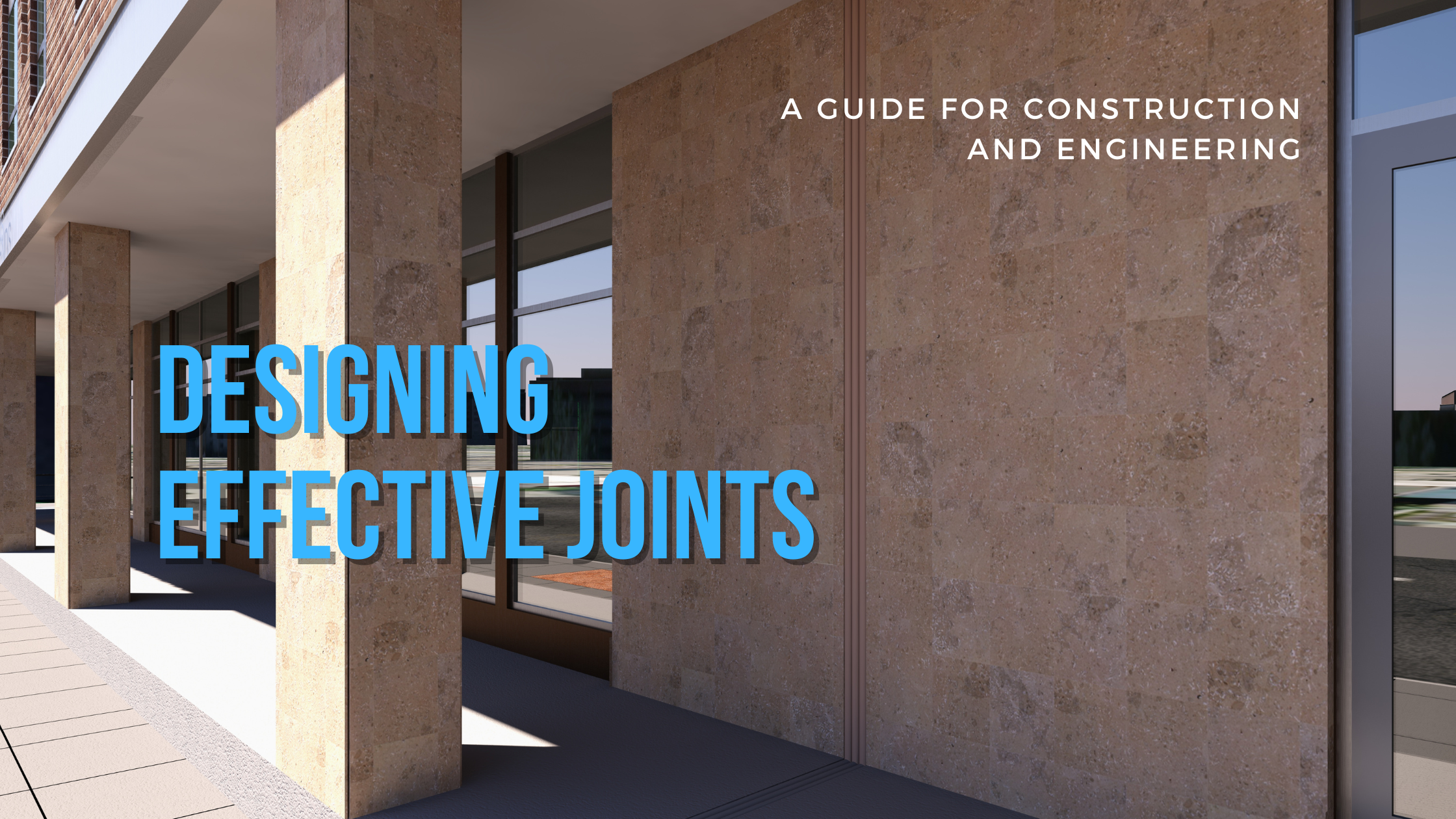Wall Expansion Joints for Building Movement | Nystrom

One of the requirements for large, commercial buildings is the ability to move without damage.
Temperature fluctuations, settling and seismic activity cause materials to expand, contract and shift. Without the right design solutions, the natural movement of a building can lead to cracks, joint failure and long-term structural issues.
So what’s needed to alleviate these problems? The answer is expansion joints! By absorbing movement, relieving stress and preserving building performance, expansion joints are essential to maintain a building’s structural integrity.
What Are Wall Expansion Joints?
Wall expansion joints are structural elements designed to allow normal movement to happen safely between connected walls. Buildings naturally expand and contract and wall expansion joints create intentional gaps at strategic locations where movement is most likely to occur in building structures.
Inside these openings are technical solutions that compress and expand as the building shifts, allowing movement and the building to shift naturally.
Expansion joints also help support a building’s envelope by preventing water infiltration and air leaks, which can lead to mold, corrosion or insulation failure.
Properly placed and well-maintained expansion joints extend the lifespan of walls, facades and finishes, minimizing maintenance needs and preserving the building’s lifespan. This can play a big part in the cost of repairs, saving a substantial amount of money in the long run.

How Wall Expansion Joints Prevent Cracks and Damage
By understanding how wall expansion joints prevent cracks and damage, you can better comprehend why they are critical to building design.
Wall expansion joints can solve several common issues:
Movement and Temperature Fluctuations
Walls in commercial buildings are constantly exposed to forces that can lead to structural issues or even failure. Some examples are:
- Temperature Fluctuation: This can cause materials like concrete, brick and metal to expand and contract at different rates, leading to fractures, warped surfaces or joint separation without proper design planning.
- Settlement: Buildings naturally settle over time because of soil movement, which can result in cracks and uneven flooring.
- Seismic Events: In areas where earthquakes are more prevalent (also known as seismic zones), lateral forces can cause even more significant shifts and compromise the structural integrity of the building if not addressed.
Properly placed expansion joints also help manage uneven movement between different materials. Contractors should measure joints every 10 feet, checking alignment and ensuring the joints are not shifting out of place.
Types of Wall Expansion Joints
There are several types of expansion joints for walls, each suited to a particular application and material.
- Sealant-filled Joints: Known as the simplest wall expansion joints, these have a flexible sealant applied between wall sections. These are commonly used in buildings with masonry and concrete walls because they absorb minor expansion and contraction but have a weatherproof barrier appropriate for exterior walls.
- Preformed Expansion Joints: Made from rubber or foam, preformed joints are ideal for high-movement projects as they are durable and flexible. They’re also recommended for exterior placement because they are water and mold-resistant. Use of preformed rubber or foam seals also allows for color matching to the substrate's surface.
- Metal Expansion Joints: Comprised of aluminum or stainless steel, metal expansion joints are the best choice for facades and curtain walls where strength and longevity are essential for safety and durability.
Materials Used for Wall Expansion Joints
Wall expansion joints made with foam are lightweight, compressible and excellent for sealing against moisture and air infiltration. They are typically used for masonry and concrete applications because they have light to moderate movement.
Joints with rubber and elastomeric materials have the highest amount of flexibility and resilience. These joints are ideal for buildings that experience frequent expansion and contraction because they can withstand repeated moderate to heavy movement without degrading.
Expansion joints made with metal and used with a secondary fire barrier are preferred in high-load applications or where fire resistance is a concern. They are the preferred choice for commercial facades and industrial buildings.
Installing Wall Expansion Joints
.jpg?width=499&height=344&name=unnamed%20(6).jpg)
Accurate measurements and error-free installation mean that the joints will do the job they’re supposed to do and protect the building. However, incorrect measurements or poor installation can negate all the benefits of using expansion joints.
Consider A Professional Installation
When deciding between hiring a professional installation team or having your crew install expansion joints, there are several important factors to consider.
- Building Complexity and Joint Specifications: Correctly placing wall expansion joints in large projects like schools, hospitals or apartments requires a level of expertise that commercial construction crews may not have.
- Measurement and Installation Accuracy: If these steps are not done right, you could end up facing expensive delays that eat up both labor and material costs. It’s always advisable to have an expansion joint specialist review your plans.
- Building Codes: If the joints aren’t installed to the standards specified in local and state building codes, you could be on the hook for expensive and time-consuming fixes. Make sure your expansion joint specialist understands the local building codes so there are fewer surprises down the road.
Relying on your crew might save on labor costs, but installation requires training, experience, skill and specialized tools that your crew may not have. Saving a few dollars on labor could lead to spending much more in the long run.
Key Considerations for Proper Installation
The proper installation of expansion joints for walls requires precise and accurate measurements, smart material selection and perfect placement to ensure structural integrity and long-term performance.
- Correct Measurements: The accurate measurement of joint width is critical. Be sure to account for expected thermal movement, seismic activity and material shrinkage.
- Proper Material Selection: Contractors should select a material that will meet the building’s environmental conditions, movement demands, aesthetic goals and maintenance plan.
- Strategic Joint Placement: Placement must align with structural stress points, such as changes in wall height, intersections and long expanses of masonry or concrete, to prevent cracking and failure.
Maintaining Wall Expansion Joints
.jpg?width=476&height=328&name=unnamed%20(7).jpg)
Maintaining wall expansion joints isn’t that difficult, but regular inspections must be done so that any issues can be repaired before they impact the durability of the joint. With routine maintenance and regular inspections, wall expansion joints can last for decades.
Regular inspections should identify signs of wear, such as sealant degradation, cracking or displacement, ensuring timely repairs before extensive damage is done. Cleaning expansion joints involves removing accumulated debris and inspecting for water infiltration, which can undermine joint integrity.
In harsh environments, additional protective measures like resealing or applying weather-resistant coatings may be necessary.
Addressing Wear and Tear
Signs of wear in wall expansion joints include cracking, splitting, detachment of sealants, visible gaps, water infiltration or excessive dirt buildup.
Compressed or deteriorated joint materials can lead to structural stress, causing cracks in adjacent surfaces. If joints can no longer expand and contract properly or show signs of moisture penetration, immediate repairs or replacement are necessary to prevent further damage.
Nystrom: Delivering The Solutions You Need
Choosing the right type of wall-to-wall expansion joint and the right material will have a crucial impact on the strength and durability of the project. Skilled installers are the best choice to ensure the expansion joints are installed correctly.
Poor installation is not something you should take a chance on. Your professional reputation rides on every project, and having the experience and skill to create a building that will be safe for years to come matters.
Now that you know why choosing the right expansion joint is so important, let Nystrom help you find the best interior and exterior wall expansion joint products for your project needs.
Ready to get started? Our experts can help you find the right solution for your next project.
Contact a Rep




